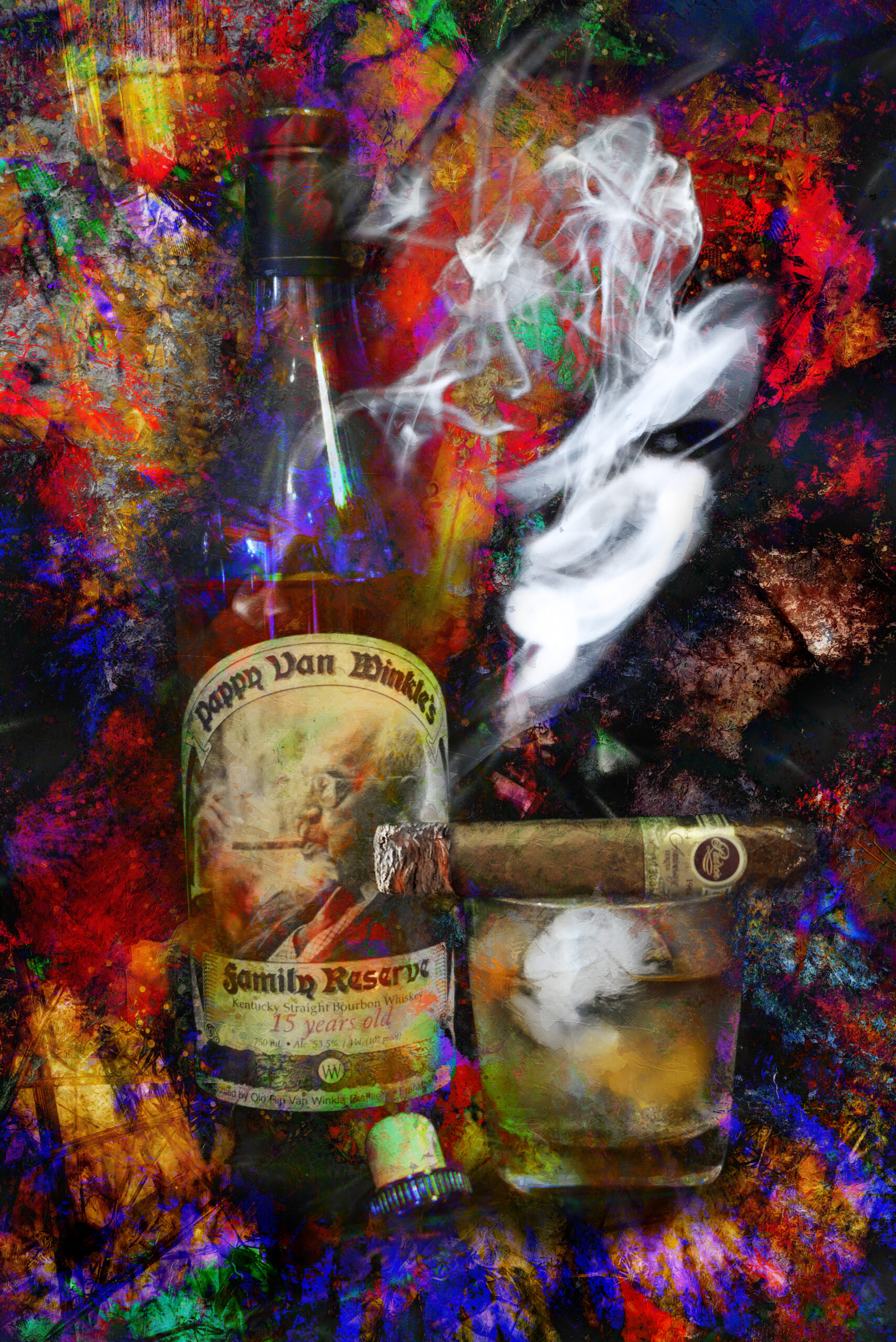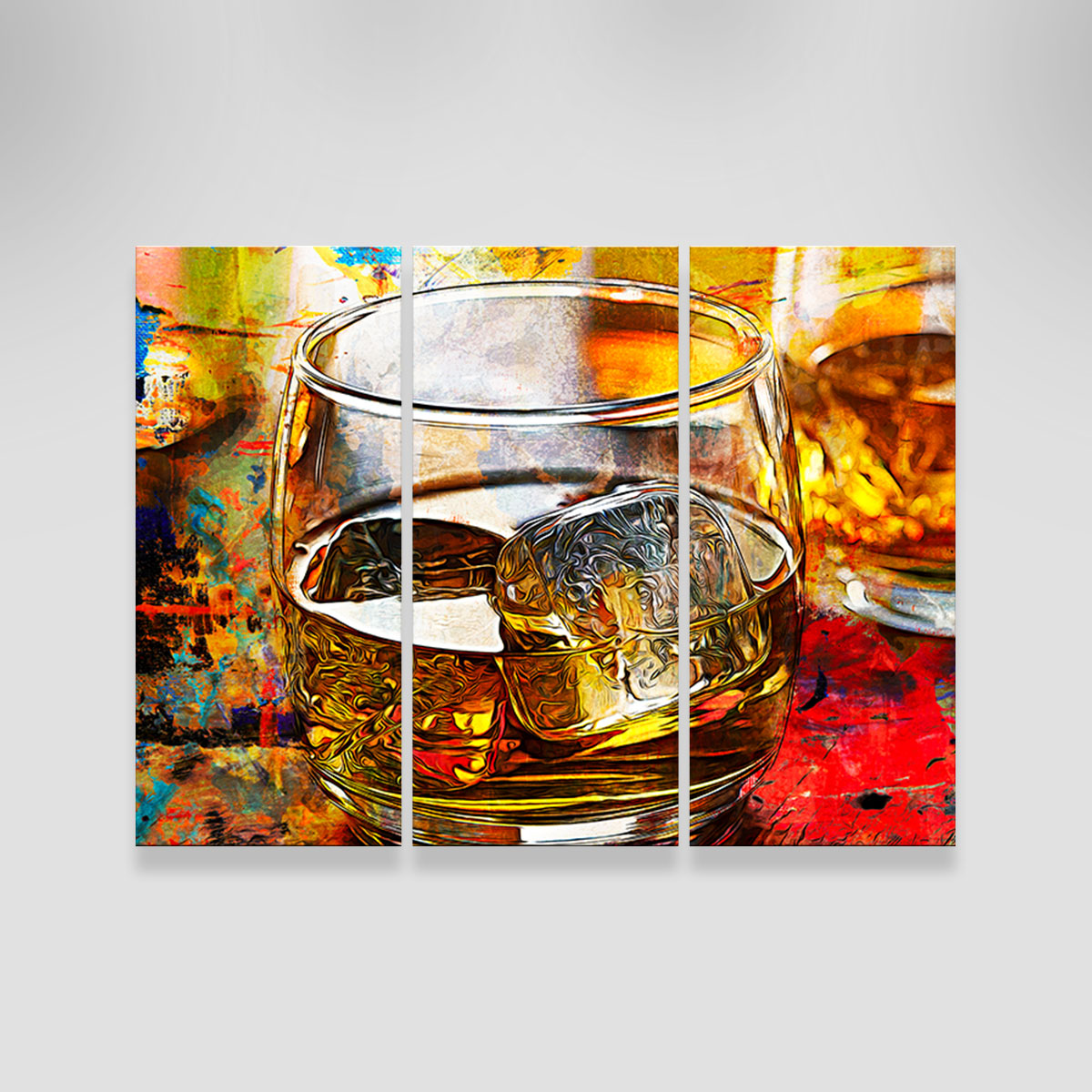Change Your Area with Sensational Whiskey Art Inspired by Nature
Wiki Article
The Relevance of Whiskey Art in Celebrating Heritage and Craftsmanship in the Beverage Industry
The elaborate partnership in between bourbon art and the celebration of heritage and craftsmanship within the drink market can not be overstated. Via attentively made tags and bottles, bourbon brand names envelop their historical roots and the artisanal abilities that specify their manufacturing methods. This imaginative measurement not only enhances market appeal yet additionally functions as a channel for social narration, cultivating a deeper link in between the customer and the craft. As we discover the numerous elements of this topic, interesting questions concerning the influence of contemporary trends on typical techniques occur, prompting further examination.The Historical Origins of Whiskey
At the heart of bourbon's appeal exists a rich tapestry of historic roots that trace back to ancient civilizations. The origins of bourbon can be linked to the purification practices of the Sumerians and Babylonians around 2000 BCE, where very early kinds of fermented grain beverages began to emerge. It was in the Center Ages that the art of distillation progressed significantly, especially in Ireland and Scotland, leading to the production of whiskey as we understand it today.
The term "bourbon" itself acquires from the Gaelic word "uisce beatha," implying "water of life." This expression emphasizes the cultural importance of bourbon in Celtic cultures, where it was frequently related to routines, parties, and common bonding. By the 15th century, purification became an acknowledged craft within reclusive areas, leading the means for the establishment of legal distilleries.
As trade routes broadened, bourbon's appeal expanded, going beyond regional boundaries and capturing the rate of interest of lovers worldwide. Limited Edition. This historic journey mirrors not just the workmanship behind scotch manufacturing however also its indispensable function in cultural and social contexts, noting it as a considerable beverage throughout background
Artistic Expression in Branding
Bourbon branding stands as a compelling junction of artistry and business, where aesthetic identification plays a vital duty in forming consumer understanding. The aesthetic appeals of whiskey labels, packaging, and advertising materials mirror not just the brand's tale however also its core worths and heritage. Via artistic expression, distilleries communicate a story that reverberates with consumers, evoking emotions and stimulating links.Using color, typography, and images in branding offers to set apart items in a saturated market. Conventional concepts may stimulate a sense of credibility and workmanship, while modern styles can signify technology and forward-thinking. This tactical imaginative direction boosts brand acknowledgment and loyalty, permitting consumers to build a personal connection with the whiskey they select.
In addition, creative expression in branding often acts as a party of local heritage. Distilleries often incorporate regional icons or historic references into their layouts, creating a sense of place that welcomes customers to take part in a more comprehensive social experience. Ultimately, the creativity behind bourbon branding not just enhances visual appeal however likewise improves the overall narrative of the brand, promoting a much deeper appreciation for the craftsmanship and heritage embedded in each bottle.
Workmanship in Container Design
The creativity obvious in bourbon branding expands past visual identity to encompass the craftsmanship associated with container design. Each bottle acts as a vessel not just for the spirit within, however likewise for the my response tale it outlines its origin, high quality, and custom. The style procedure requires meticulous focus to detail, as components such click for info as closure, material, and form add significantly to the total perception of the whiskey.Workmanship in container style entails picking high-grade glass that can boost the scotch's shade and quality, while likewise supplying a tactile experience for the customer. The shape of the bottle must be both functional and cosmetically attractive, often mirroring the heritage of the brand. Many distilleries select special shapes or printed logos that stimulate a sense of authenticity and background.
Additionally, the tag style and typography play an essential duty in communicating the brand name's narrative. Limited Edition. A well-crafted bottle not only captivates the customer's eye yet likewise enhances the brand's dedication to high quality and tradition. By doing this, the craftsmanship of container design comes to be a crucial aspect of the scotch experience, combining creativity with an extensive respect for heritage
Social Importance of Bourbon Art
Celebrating custom and workmanship, the cultural value of whiskey art goes beyond plain aesthetics, intertwining with the historical and social stories of the areas from which it comes from. Each bottle functions as a canvas, showing the special tales, folklore, and customs that have actually formed local whiskey-making methods. i thought about this The intricate styles usually reflect the heritage of the distillers, integrating icons and motifs that resonate with the culture and worths of their areas.
On top of that, whiskey art plays a crucial role in public events and parties, serving as a substantial link in between individuals and their shared experiences. By appreciating the virtuosity in whiskey product packaging, consumers grow a deeper understanding and regard for the craft, ultimately enhancing their satisfaction of the beverage itself.
Modern Trends in Scotch Discussion
In the last few years, the discussion of bourbon has progressed to reflect contemporary tastes and fads while still recognizing conventional workmanship - Whiskey Art. Distilleries are significantly focusing on aesthetic aspects that boost the overall drinking experience, connecting the void between heritage and modernityInnovative bottle styles have actually arised, frequently integrating lasting products and imaginative tags that inform compelling stories. Numerous brands now work together with neighborhood musicians, instilling their items with unique visual expressions that resonate with consumers. Furthermore, limited-edition launches are usually packaged in collectible containers, adding value and appeal for connoisseurs.

Conclusion
To conclude, bourbon art functions as a crucial avenue for sharing the heritage and craftsmanship integral in the beverage industry. With detailed branding, cutting-edge bottle designs, and culturally considerable creative components, bourbon brand names effectively honor their customs and get in touch with customers. This imaginative story not just boosts the appreciation of whiskey but likewise strengthens neighborhood identification and satisfaction amongst manufacturers. Eventually, whiskey art plays a necessary duty in preserving and commemorating the abundant social tapestry of whiskey-making.

Craftsmanship in bottle style includes picking top quality glass that can improve the scotch's shade and quality, while additionally giving a tactile experience for the customer. In this method, the craftsmanship of container layout becomes an important element of the scotch experience, merging artistry with an extensive respect for heritage.
In final thought, whiskey art serves as a crucial conduit for expressing the heritage and craftsmanship integral in the beverage market.
Report this wiki page